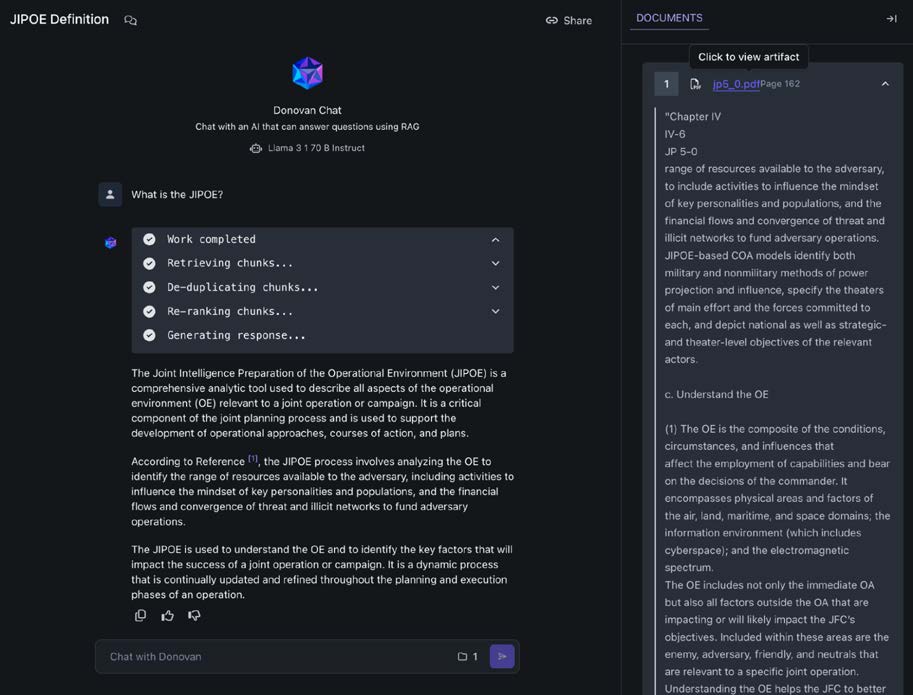Donovan Quickstart Guide
Donovan is an AI-powered decision-making platform to help users rapidly understand, plan, and act. It is designed to streamline your workflow, enabling you to swiftly search, analyze, and comprehend critical information from a diverse array of documents or data sources.
This quickstart guide provides basic instruction on how to get started with Donovan. It outlines how to:
- Upload data
- Select LLMs
- Query while referencing uploaded data
- Generate reports
Looking for new additions to donovan? Check out the Changelog
Homepage
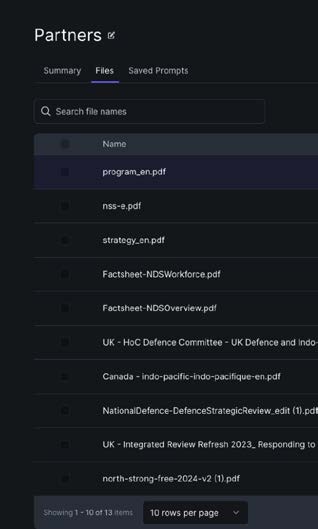
This is the main page where users begin when accessing Donovan. You can:
- Select knowledge bases
- Start a new thread
- Select assistants to chat with
You can also access Configuration settings via the user drop-down menu in the lower-left corner.
Side Navigation Menu
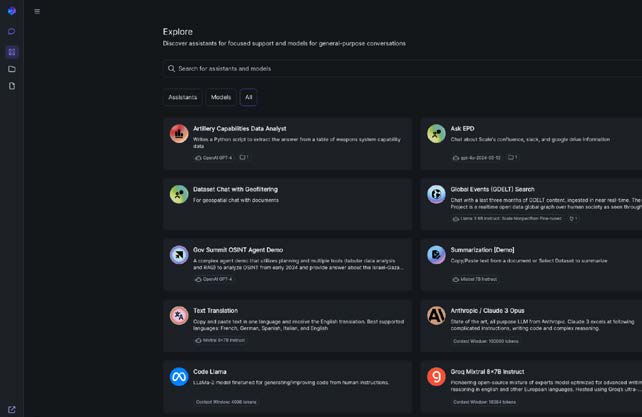
Click on the icon to expand the menu at any time. Here, you can:
- Select your active account
- Navigate to the Home page, Explore page, Knowledge bases, and most-recently active threads
The menu sidebar is available from all Donovan pages.
Explore Page

On the Explore Page, you can search for models or applications tailored to your workflows. Scale can help build custom assistants for you or your broader team.
Uploading and Managing Files

Creating and configuring Knowledge bases allows you to bring together valuable information for structured analysis and decision-making.
Supported Data Types:
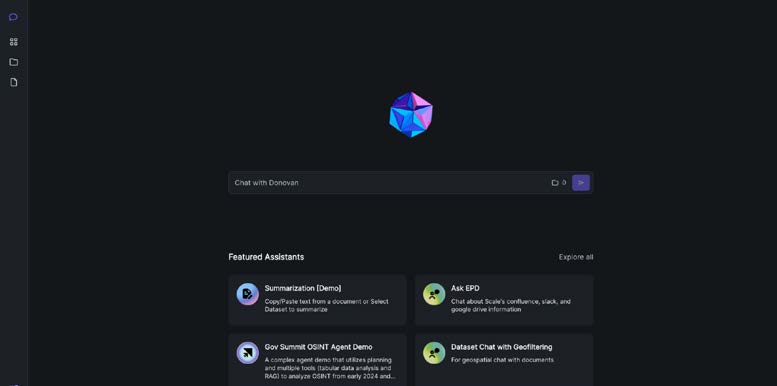
| Type | Formats |
|---|---|
| Text | .txt, .doc, .docx, .pdf, JSON |
| Presentation | .ppt, .pptx, .pdf |
| Tabular | .csv |
| Live Connections | API, Cloud Storage* |
*AWS S3, Google Drive, & Microsoft SharePoint are supported.
Create a New Knowledge Base
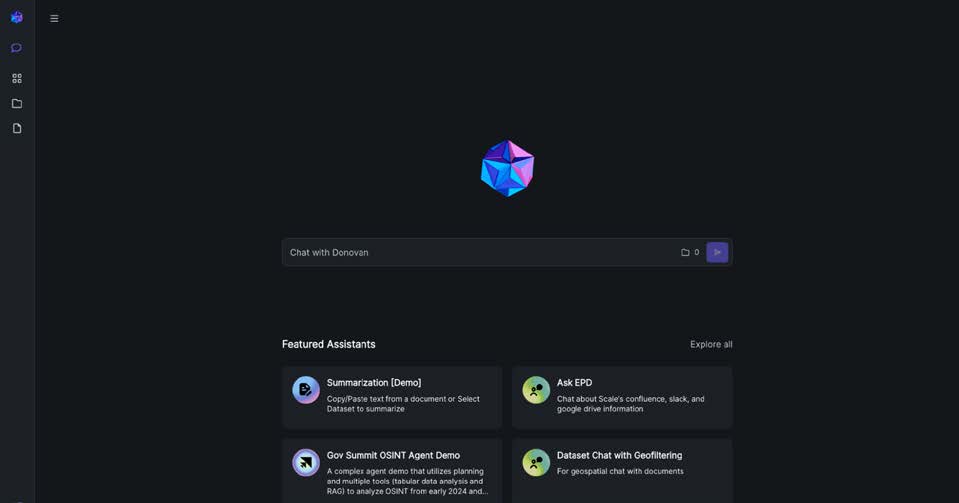
- Navigate to the Knowledge bases page using the sidebar menu.
- Click on "Create Knowledge Base" to initiate the process.
Configure a Knowledge Base
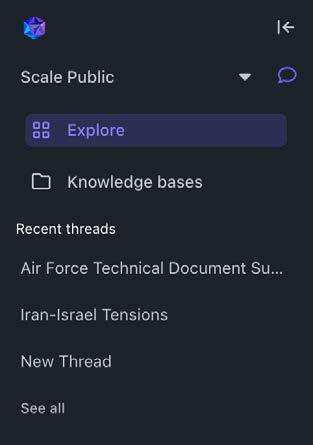
- Name the knowledge base to provide a clear, concise identifier.
- Optionally, add a description to offer context for other users.
Add Files to a Knowledge Base
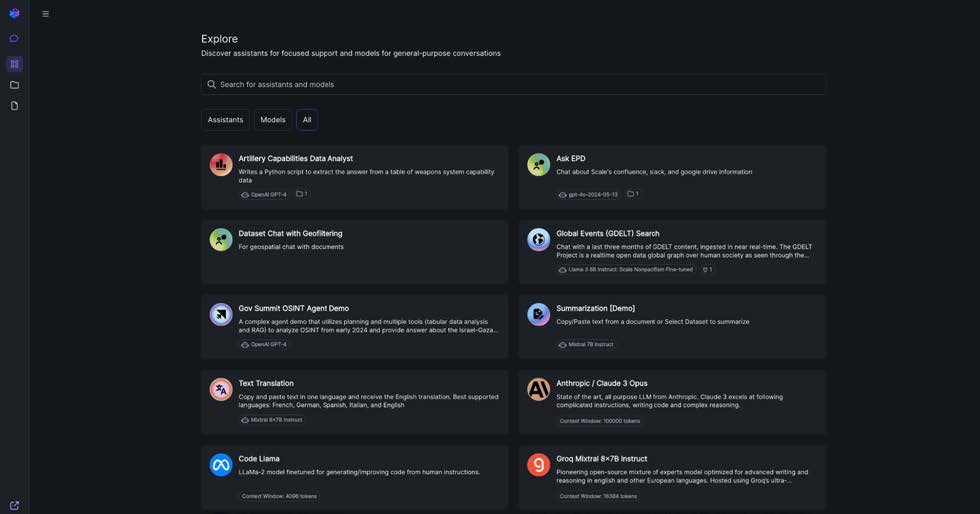
There are several methods to add files:
- Local Upload: Drag and drop or browse local files
- Cloud Upload: Import data from supported cloud storage
- Scale Assist: Field Engineers can upload on your behalf. Contact your Scale Engagement Manager for support with complex data.
Classification
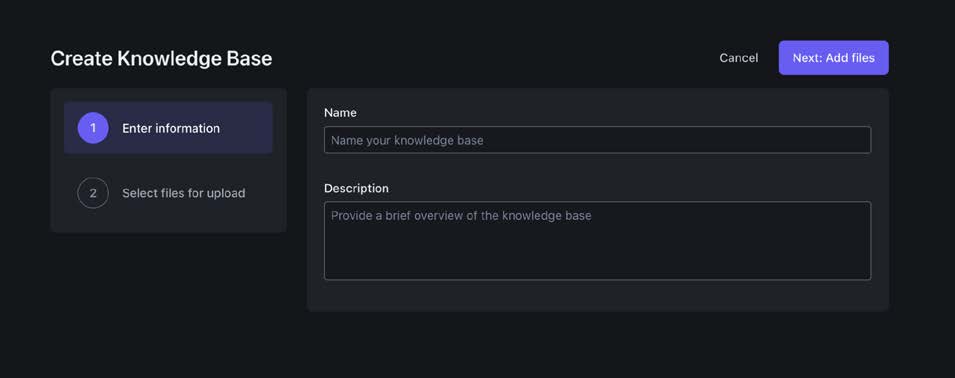
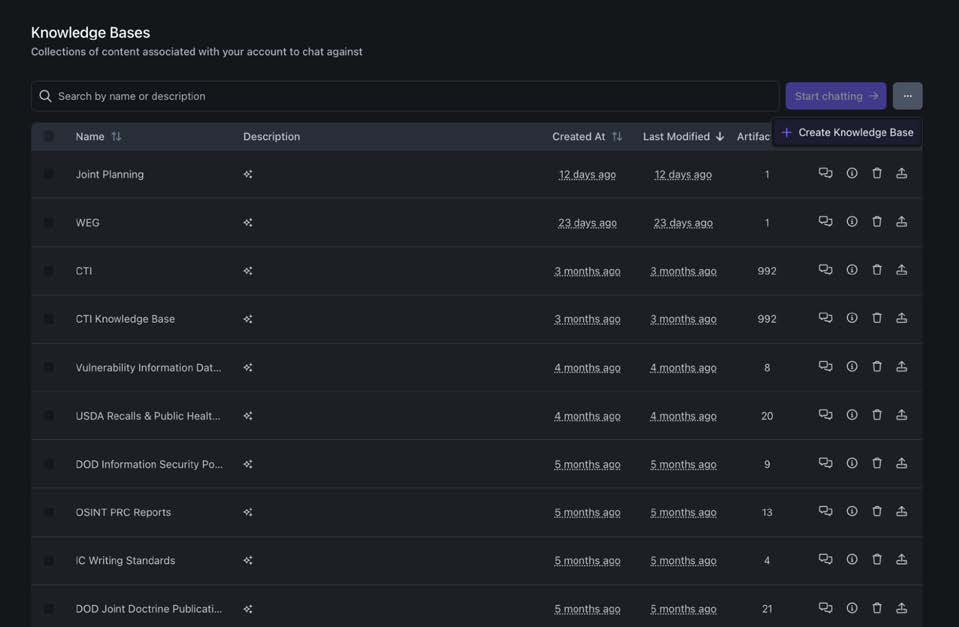
Users must assign an overall classification label to each file during upload.
- Use the dropdown menu for individual files
- Apply bulk classification for multiple files with the same classification
- Contact Scale if a required classification/caveat is missing
Using Knowledge Bases
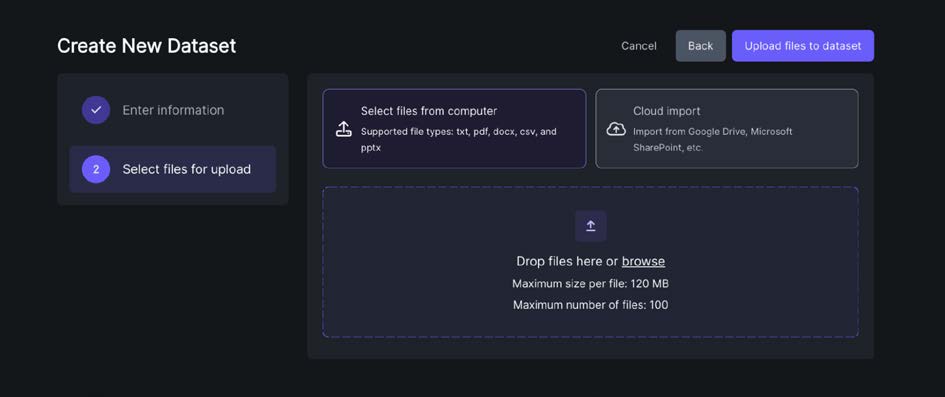
- Select desired Knowledge bases and initiate a new thread from the Knowledge Bases page
- Use the folder icon next to the chat input to add/remove Knowledge bases during a thread
- You can use 0 to 10 Knowledge bases per thread
Default Model Selection
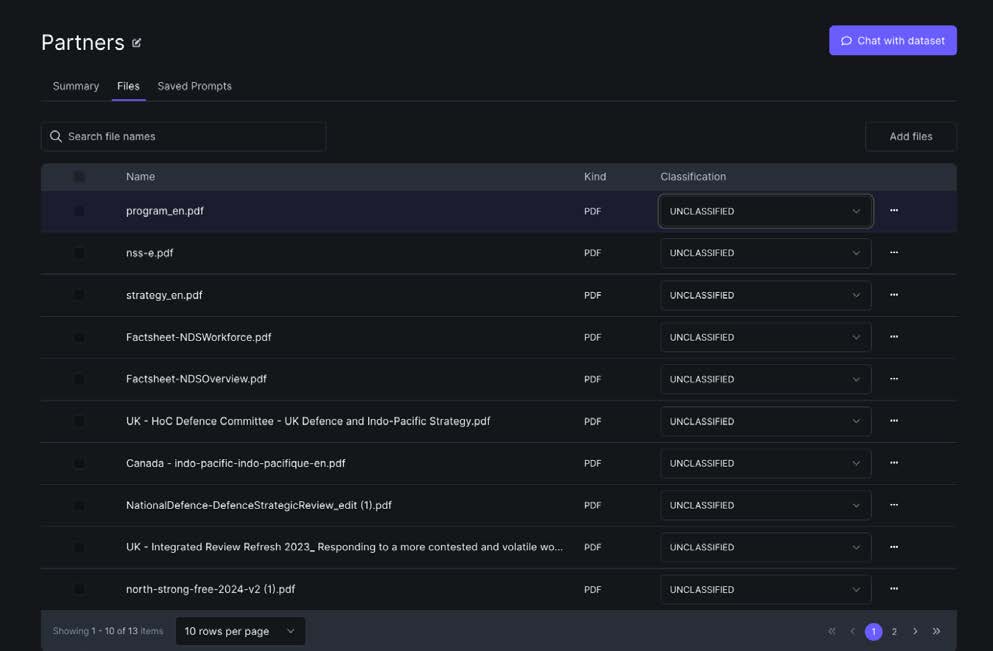
You can set your default model from the Configurations page or within the chat interface:
- Select 'Models'
- Use the 'Default Model' dropdown to choose the active model
- View available models in your org/environment
Threads
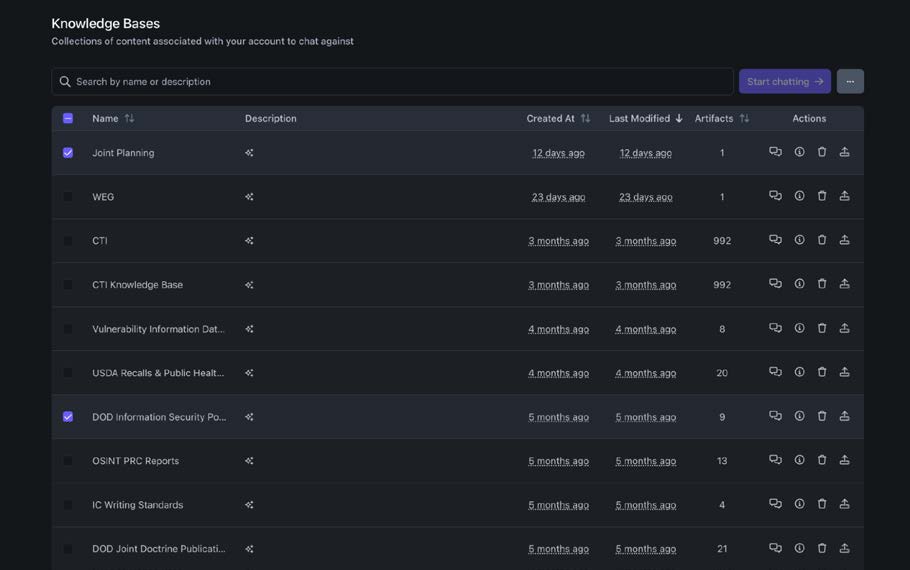
- Start new or access previous threads via the Threads link on the sidebar
- Click a thread title to resume chat
- Confirm Knowledge bases and model selection
- Use the trash icon to delete threads
Using the Chat Interface
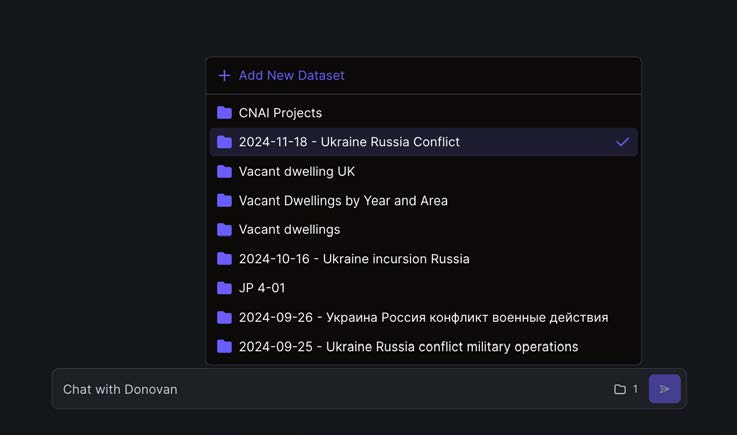
- Enter queries in plain language
- Donovan responds conversationally
Context
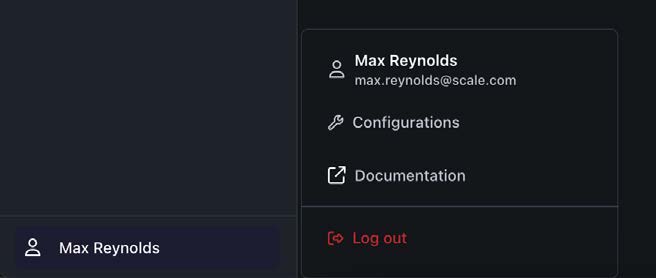
- Threads retain prior messages to support continuity
- Use Context Switching to change topics within a thread
- Start a new thread to reset context or improve response quality
Citations
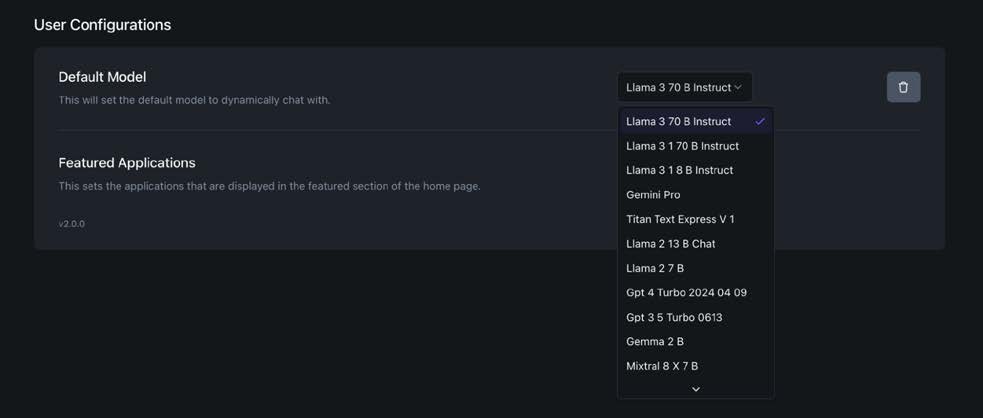
Donovan uses Retrieval-Augmented Generation (RAG):
- Responses with source document content will include citations
- Click "Show Attachments" or citation links to view source material
Prompt Engineering
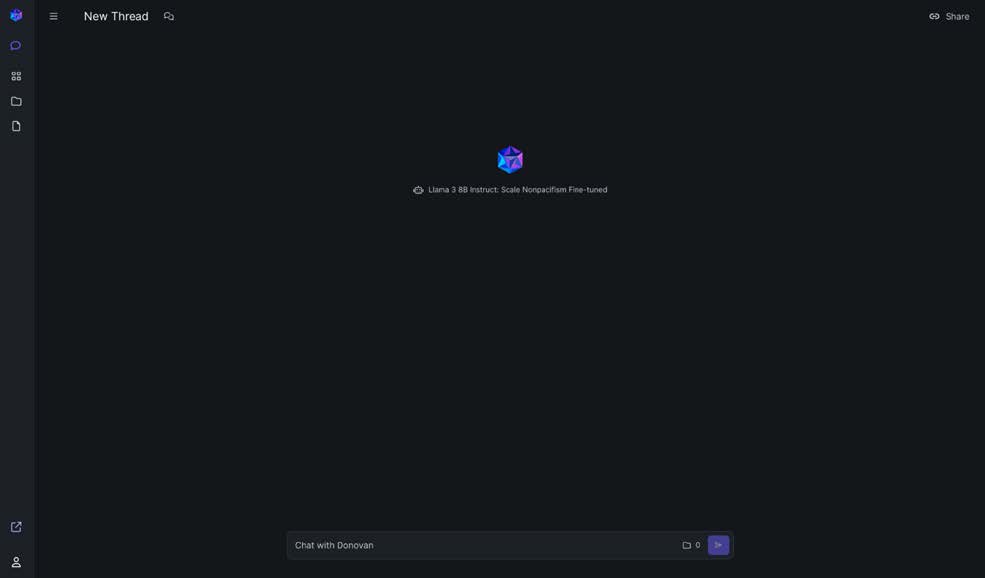
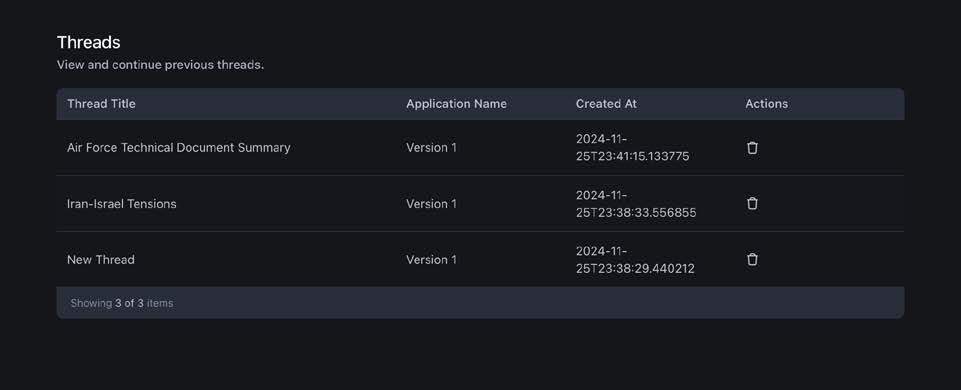
Explore the Donovan "Prompt Engineering Guidance" document for:
- Tips
- Examples
- Advanced techniques
Final Notes
